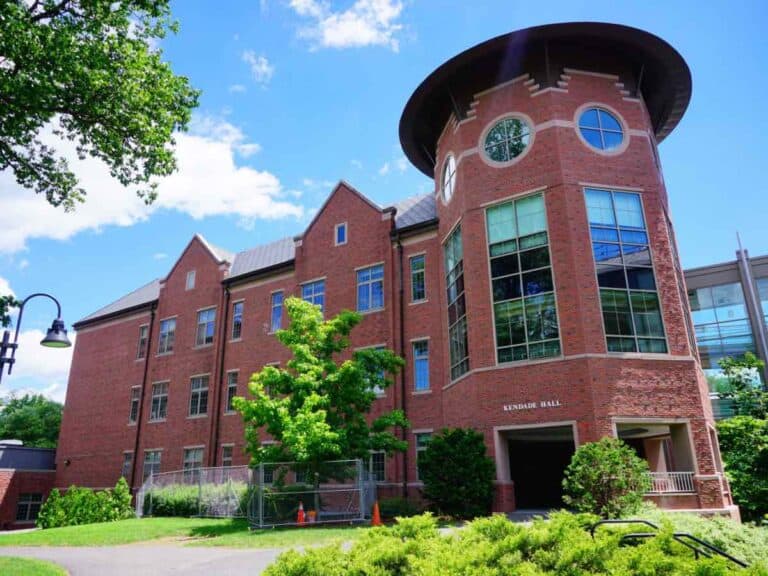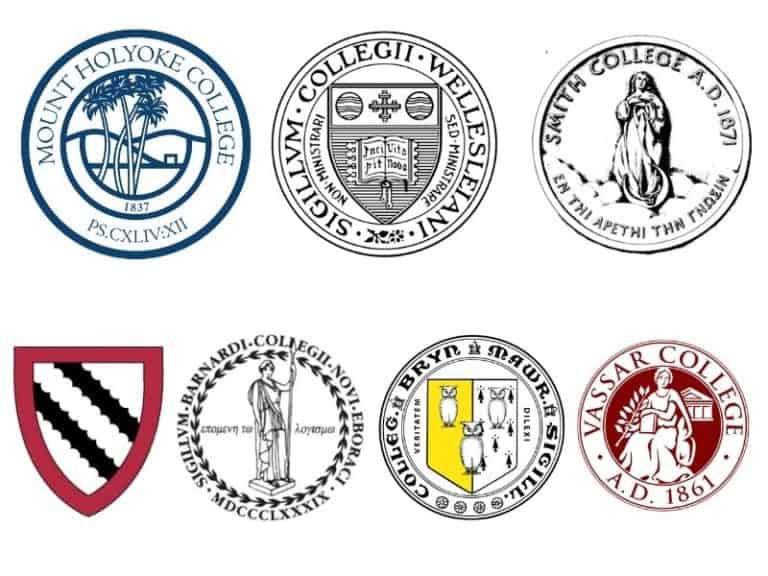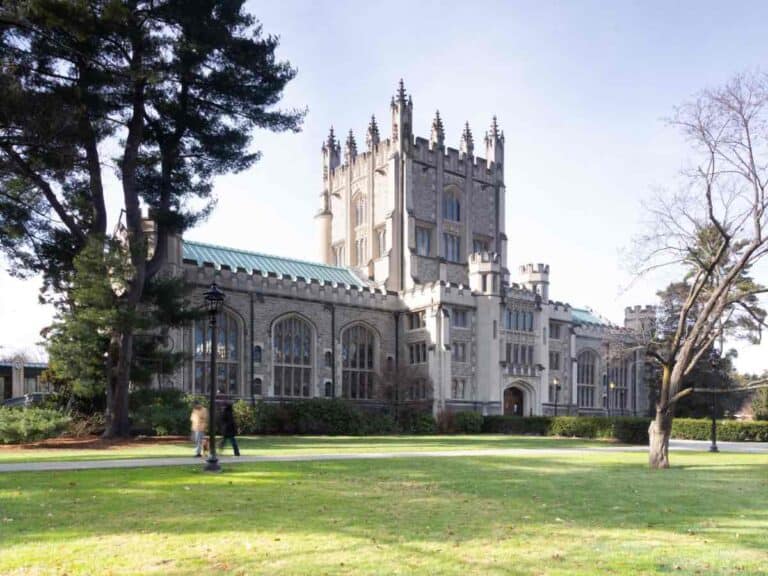How to Get Into Wellesley College: Ultimate Guide
Getting into a competitive college with a low acceptance rate is no easy feat. It’s a must to have a competitive application so that its admissions officers will notice you and offer you an available spot.
Otherwise, you may end up getting a dreaded letter of rejection.
Wellesley College is one of the most selective postsecondary institutions in the United States.
It is a private women’s liberal arts college in Wellesley, Massachusetts. It is also a member of the Seven Sisters and is considered a Hidden Ivy.
It’s essential to know the things that matter the most during the admission process, such as:
- A high GPA
- A high class ranking
- Challenging AP courses
- Glowing recommendations
- Remarkable essays
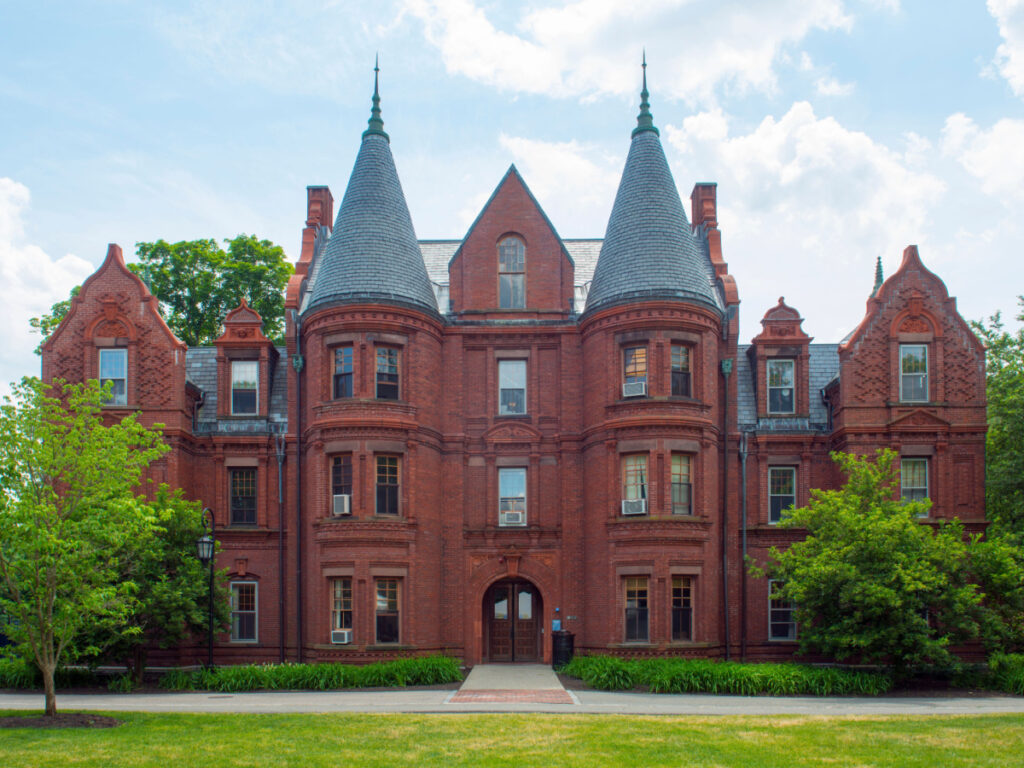
General Acceptance Rate vs. Early Acceptance Rate
I cannot stress enough how low Wellesley’s acceptance rate is!
Your chances of getting accepted, however, can vary quite a bit. It will depend on whether you are an early or regular first-year applicant or end up on the waitlist.
Way Less Than a Fifth of All Applicants Get In
The acceptance rate for first-time, first-year applicants is 14%.
Wellesley’s selectivity level is equivalent to other competitive institutions such as Bates College, Boston University, Colorado College, Faulkner University, Haverford College, and Wesleyan University.
The following figures are from its most recent Common Data Set (CDS):
- 8,491: Number of first-time, first-year women who applied
- 1,152: Number of admitted first-time, first-year women
- 585: Number of admitted first-time, first-year women who enrolled
Based on these numbers, Wellesley has a yield rate of 51%.
The yield rate is the percentage of admitted students who enroll. The National Association for College Admission Counseling (NACAC) says that the average yield rate for private colleges is 33%.
Indeed, more accepted students attend Wellesley than at most other schools.
Wait — You Could End Up on the Waitlist!
Wellesley College waitlists students.
It receives more qualified applicants than it has space available for in the incoming class. Because of this, it places some students who meet admission requirements on a waitlist.
However, only around 2% of waitlisted students get accepted eventually.
Just check out the following figures from its CDS for the current school year:
- 2,578: Number of qualified applicants placed on a waitlist
- 1,304: Number of students accepting a place on the waitlist
- 44: Number of admitted waitlisted applicants
It brings us to an important question:
Should You Show Your Interest in Remaining on the Waitlist?
It is definitely advisable that you notify the admissions office of your desire to remain on the waitlist. However, it doesn’t guarantee that you will receive an offer to attend.
The waitlist response form becomes available for waitlisted students to fill out and submit between April 1 and May 1. You can access the form by logging into your applicant portal.
Besides, informing Wellesley that you want to stay on its waitlist is a form of demonstrated interest.
One of the various criteria that admissions officers consider when reviewing first-time, first-year applications is the level of interest of the student in attending if accepted.
We will talk about admissions factors in a few. Don’t stop reading now!
The Early Bird Gets the Worm: Applying Earlier is a Plus
The acceptance rate for early first-time, first-year applicants is 29%.
Applying earlier increases the acceptance rate for incoming freshmen students by up to 15% compared to the general acceptance rate. As a result, your chances of receiving an enrollment offer are higher.
Here are the early application figures from the most recent CDS of Wellesley:
- 887: Number of early decision applicants
- 259: Number of admitted early decision applicants
Let us answer a pressing question:
Should You Apply Early to Increase Your Admission Chances?
Applying early to Wellesley College can increase your chances of getting accepted. Statistics show that close to a third of all early applicants receive an acceptance letter in the mail.
However, it is worth noting that early application is not enough to get you accepted.
Please always bear in mind that it is a highly selective institution. Also, most students who apply early tend to have competitive applications, thus allowing them to enjoy increased admission chances.
If you are considering applying early, ensure you have a stellar application.
The location is pretty nice since it’s somewhat near Boston. People are super friendly and absolutely driven. It’s a small school so you will definitely get enough opportunities and all the professors are focused on you and know you as an individual.
Freshman Review – Niche.com
The First Things Considered in a First-Year Application
Wellesley College has a holistic admissions policy. It means that its admissions officers will evaluate various parts of your application within the context of resources to which you have access.
However, some components of your application are more important than the rest.
GPA: Very Important Yet Unreported
The high school GPA of an applicant is a crucial factor that influences the admission decision.
Unfortunately, Wellesley does not publish the average GPA of admitted students. Its oldest CDS reports online did not indicate the average GPA of incoming first-year classes either.
Some websites say that having a GPA between 3.86 and 3.98 is necessary for admission.
Considering that it is highly selective, having an impressive high school GPA is a plus.
However, it’s worth noting that a holistic application review process confirms that your GPA is not the only criterion that counts.
Your Application is Ranked Based on Your Class Rank
Class rank is a crucial admission factor, though not as important as GPA.
Graduating near or at the top of your high school class helps increase your admission chances. True enough, up to 89% of accepted students were in the top 10% of their graduating class.
On the other hand, around 98% were in the top 25% of their high school graduating class.
Worry not if your high school does not rank its students.
It’s because class rank will not be a part of the review process. Only 29% of accepted students reported class ranking in their respective applications.
Took Challenging Courses? Then Getting in Should be Less of a Challenge!
The level of rigor of your high school curriculum is a consideration during the review process.
Your high school transcript’s difficulty level is as important as your GPA. Therefore, taking challenging courses can improve your chances of admission.
While AP classes help you get in, AP exams allow you to earn college credit.
Scoring a five on the AP exam is necessary to earn one college credit. You can have only up to four college credits from AP exams with perfect scores.
Test Scores: To Submit or Not to Submit, That is the Question
Wellesley is a test-optional school. It means that applicants may or may not submit their test scores.
Refrain from assuming that just because you sat for the SAT or ACT doesn’t mean you should submit your scores. Be smart about the matter to boost your odds of getting accepted.
The average SAT score of accepted students is 1490. Around 25% scored 1540 or higher.
On the other hand, the average ACT score of accepted students is 34. About 25% scored 35 or higher.
Did you get lower than 1440 on the SAT or lower than 33 on the ACT?
Avoid submitting your test score!
Only 25% of accepted students scored 1440 and 33 on the SAT and ACT, respectively, which means your score may lower your chances of getting in.
Here are the percentages of enrolled students with test scores:
- 40%: SAT
- 21%: ACT
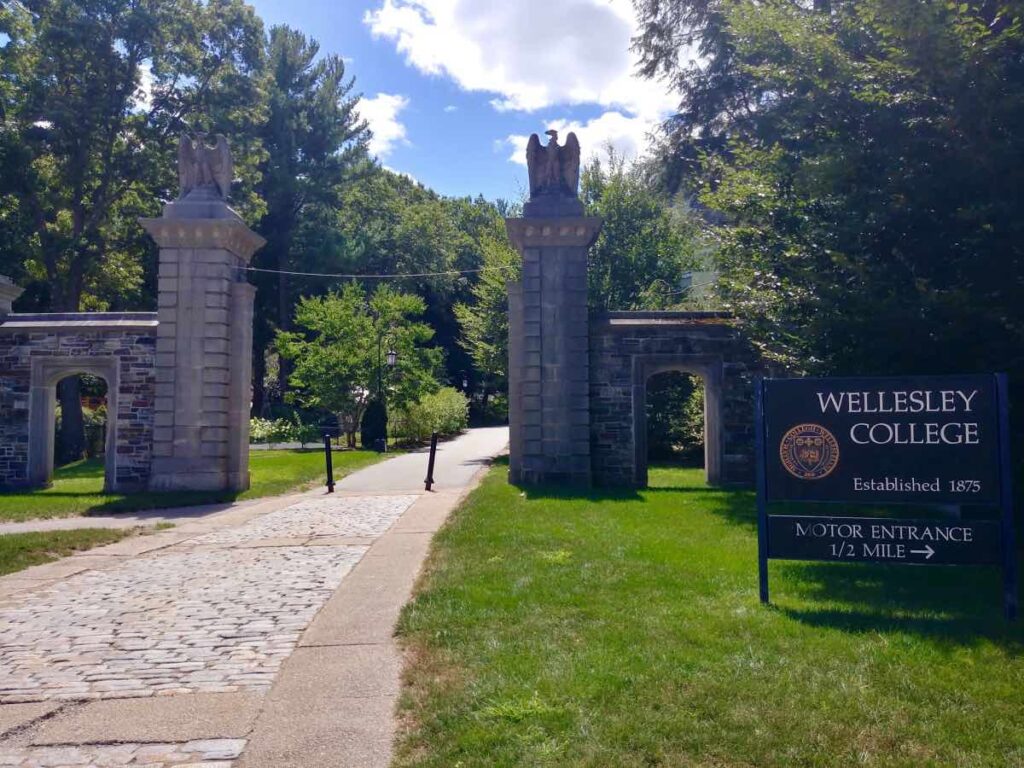
Not One, Not Two, But Three Recommendations
Wellesley first-time, first-year applicants are required to submit three letters of recommendation.
The following are the recommendations to submit:
- One counselor recommendation
- Two academic recommendations
Besides a high school counselor, another school official may also write the counselor recommendation letter.
On the other hand, the two academic recommendations should come from teachers. Applicants are encouraged to submit academic recommendations from teachers of two different academic subjects.
Letters of recommendation, together with academic rigor and GPA, are the top admission criteria.
Admissions Officers Say to Submit Two Essays
Students applying to Wellesley must submit a couple of essays:
- One personal essay
- One school-specific essay
When writing the personal essay, choose one from the prompts the Common App or Coalition App provides. Admission officers recommend your essay be 250 to 650 words long.
Meanwhile, you should respond to the prompt Wellesley gives. Your essay should be 250 to 400 words long.
Just a quick tip to eventually become a Wellesley alumnae member:
Use the opportunity to demonstrate your personality and interests in your college-specific essay. Showing your uniqueness allows you to stand out from applicants with similar academic profiles.
Other Admission Criteria Matter, Too
All academic factors are a part of the review process.
Those with the most impact include:
- Academic rigor
- High school GPA
- Letters of recommendation
Class rank and application essays are essential, too, but less so compared to the three mentioned above. Admissions officers consider the SAT or ACT scores only if they are submitted.
Various non-academic factors are also vital components of your college application.
Topping the list is your character or personal qualities because who you are and your strengths and weaknesses all matter. Your list of extracurricular activities and talent or ability follow suit.
There are a couple of non-academic criteria that Wellesley doesn’t care about, and they are:
- Interview
- Religious affiliation or commitment
High School Units: Recommended, Not Required
There is no required fixed plan for secondary school course preparation. However, most students who get admitted have completed four years of college preparatory studies in high school.
The following is the recommended number of units for various college prep courses:
| Course | Units |
|---|---|
| English | 4 |
| Mathematics | 4 |
| Science | 3 |
| Foreign language | 4 |
| Social studies | 4 |
Please note that one unit is equivalent to one year of study.
Wellesley says that students who intend to concentrate on math, natural sciences, or premedical studies are encouraged to take additional courses in mathematics and science during their high school careers.
ED vs. RD: Which Admission Plan is Right for You?
Students can choose from various admission plans.
Wellesley has two early decision (ED) rounds. As the name suggests, incoming first-time, first-year students can submit their applications early and receive notification decisions early as well.
Applying through ED, as earlier mentioned, can increase your chances of getting accepted — 29% vs. 14%.
However, it’s a must to take note of a couple of things:
- ED applicants are competitive students
- ED is a binding plan — you must enroll if admitted
So, before submitting your application earlier than your peers, consider the pros and cons very well. Feel free to apply via ED if your application tips the scales to a better likelihood of admission.
As expected, a regular decision (RD) round is also an option among applicants.
Here are the application deadlines and notification dates of all admission plans available:
| Admission Plan | Application Deadline | Notification Date |
|---|---|---|
| ED I | November 1 | Mid-December |
| ED II | January 1 | Mid-February |
| RD | January 8 | Late March |
Let’s answer a couple of questions related to applying:
What’s the Difference Between ED I and ED II?
ED I is similar to ED II, except it has an earlier deadline and notification date. Both early admission plan rounds are binding, meaning enrolling is a must if you get an offer to do so.
Can I Reapply Via RD If Rejected Early?
No, you cannot reapply to Wellesley via the RD round if rejected during the ED round. The general rule is you can apply to a college only once during a single admission cycle.
On the other hand, there is no need to reapply via the RD round if deferred during the ED round. Your application will automatically undergo re-evaluation as a part of the RD pool.
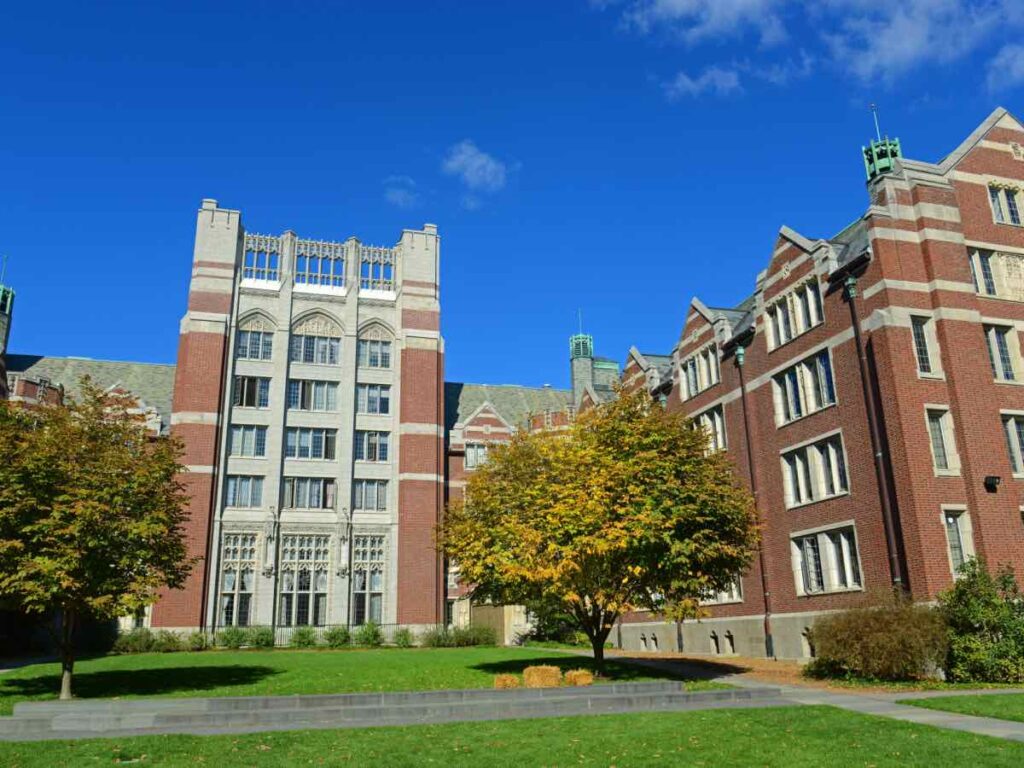
Making the Switch to Wellesley as a Transferee
Wellesley College welcomes students transferring from other postsecondary institutions.
However, the number of transferees it can accept will depend on space availability. It may not open its doors to transferring students if the first-time, first-year enrollment is strong.
Better Chances of Getting in as a Transfer Applicant
The acceptance rate for transfer applicants is 18%.
Your chances of being accepted as a transfer student are higher than those of first-year applicants (14%) but lower than those of ED applicants (29%).
Below are the transfer admission figures as per Wellesley’s latest CDS:
- 241: Number of transfer applicants
- 43: Number of accepted transfer applicants
- 20: Number of accepted transfer applicants who enrolled
Transcripts and Other Transfer Requirements
You can transfer only as a first-year or second-year student.
Its admissions office wants to see the completion of at least two full semesters of coursework completed at another institution of higher education. That’s equivalent to not less than 16 units.
Important to note, too, is that your previous college, whether public or private, should be accredited.
Below are the items you need to submit when applying as a transfer student:
- High school transcript
- College transcript
- Statement of good standing from prior college
There is no need to submit your SAT or ACT scores or undergo an interview when applying.
I didn’t make any friends and I had bad experiences with supposedly great professors. I felt like many of my peers AND professors were only concerned with things like rankings and their reputation. I knew people who lost friends over exam scores. I got very depressed and isolated. I really regret choosing Wellesley.
Sophomore Review – Niche.com
College Credits: Will They Transfer With You?
Wellesley accepts credits earned from another college or university.
However, the lowest possible grade for any course that may win you credit is a C, equivalent to 2.0. In addition, the course should be similar to what the institution offers or teaches.
The maximum number of credits from a different school it can accept is 16.
This article is a part of series about Seven Sisters colleges.
Next Article: What Vassar College is Known For
Disclaimer: The views and opinions expressed in this article are those of the authors and do not necessarily represent those of the College Reality Check.
